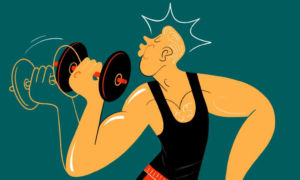The “unsung heroes” and “backbone” of the cattle industry, Aboriginal Australians have a long history as stockmen and drovers across the country’s north.
While their stories have often been untold, a permanent photography exhibition featuring portraits of Indigenous drovers is drawing a relatively unknown part of bush history out of the shadows.
Injalandji-Dhidhanu man Ian Saltmere is one of the people featured in the exhibition in outback Queensland.
He was born and bred on Rocklands Station, a cattle property just over two hours’ drive north of Camooweal, a North West Queensland town close to the Northern Territory border.
Now retired, Mr Saltmere followed in his father’s footsteps to become a full-time drover at just 13 years old.
He said his childhood on the station was spent listening to droving stories from the older Indigenous stockmen who were integral to the success of the cattle industry during early European settlement.
“The Aboriginals took them [the Europeans] to the water,” he said.
Before large trucks could carry the animals, people walked thousands of head of cattle long distances to where they needed to be.
Stock routes, referred to as the long paddock, still exist across Australia and they’re used to feed livestock in times of drought.
Mr Saltmere said Aboriginal people helped Europeans navigate the harsh landscape.
“When they would go past another boundary, they’ll pick up another couple of Aboriginals there, and they’d do the same,” he said.
“They had to know where the land was, where the water was to bring them down and after the wet.”
Mr Saltmere said the exhibition showed the culture of Aboriginal people.
“There’s a lot of unsung heroes out there that have never been talked about … a lot of history there,” he said.
“Aboriginal people were more or less the backbone.”
Place in history
The exhibition, titled Unsung heroes of the outback and the cattle industry, has 15 portraits and holds a permanent space inside the Drovers Camp Museum at Camooweal, 200 kilometres north of Mount Isa.
Considered the heart of droving in the outback region, Camooweal became a central outpost for drovers to stop while moving cattle across the Northern Territory and Queensland during the 19th and early 20th centuries.
Exhibition curator David Prichard, an award-winning Australian photographer, had the idea for the drover portraits last year while he was trekking through the bush photographing Indigenous rodeo riders.
Mr Prichard said showcasing Aboriginal people from the outback and solidifying their place in history drove his passion to create the exhibition.
“It’s almost a race to photograph some of the older people because … a lot of them are gone,” he said.
“The older ones are really the ones who shaped the industry as it stands today.”
Mr Prichard said while snapping the portraits, he was amazed by the yarns the drovers shared.
“It can be pretty confronting sometimes,” he said.
“They’ve shown incredible resilience to come through to where they stand today and a lot of the treatment they received and dealt with was pretty harsh.”
Aboriginal stockman who helped build the cattle industry were typically unpaid for their labour and were instead offered rations as compensation.
This part of history, known as the “stolen wages”, has led to Federal Court cases where Indigenous people seek to receive retribution.
Sharing Aboriginal history
Mr Prichard also included the drovers’ family members in some of the shots to extend the exhibition’s reach.
“To broaden the interest and hopefully make it something that the younger generations will be interested in … because their young uncles or young aunts are in it,” he said.
“I really like the idea of taking the person out of their normal context, so there’s no bush around or anything like that — it’s a focus on the [subjects].”
Before moving north to Camooweal from her country on the Simpson Desert, Wangkangurru Yarluyandi woman Josie Rowlands said she knew very little about Aboriginal history in the cattle industry.
“There’s a lot of Aboriginal history in there,” said Ms Rowlands, now a volunteer at the Drovers Camp Museum.
“By getting that portraits exhibition [it] highlights and starts to tell the story, acknowledges all our people did to open up this area for the Australian beef cattle industry.”
ABC North West Qld — local news in your inbox
Get our local newsletter, delivered free each Tuesday




